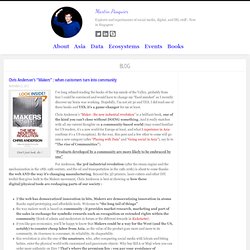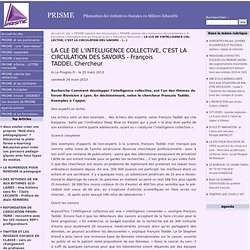

Social Business By Design: Transformative Social Media Strategies for the Connected Company eBook: Dion Hinchcliffe, Peter Kim, Jeff Dachis: Kindle Store. Going Beyond ‘Bolt-On’ Digital Transformation. Much has been made recently of the imperative to fully transition our businesses into the modern digital world.

It now hardly needs to be said at this point. There is even some encouraging news for traditional enterprises: The latest data from Forrester shows that companies are indeed at long last making digital transformation a top priority, with 74% of executives saying that they currently have a strategy to get there. Yet “having a digital strategy” can also mean just about anything, depending upon who you ask. At this point however, there are basically two main forks in the road to digital for most organizations: There is the ‘bolt-on’ strategy, which typically means adding a few new digital channels to existing touchpoints — typically social and mobile — and maybe creating an associated but minor sideline business with some digital revenue. Then there is the ‘digital transformation’ approach to digital.
Many industries even today are resistant to digital. Seek out digital change. Let The Network Do The Work. One of the most striking things I see when watching organizations make the transition from legacy industrial models of working to new network-based models, is that we keep trying to employ the new tools and ideas in the same old ways.

Certainly, it’s quite hard to unlearn the old methods, so deeply instilled are they by prior experience, history, and momentum. But as businesses, even today, we largely still try to create all the ideas, try to control everything, and focus on doing all the work to produce outcomes within the organization, team, or enterprise, with a little help of perhaps a few closely held suppliers and business partners. In short, most organizations still have an out-dated and overly centralized model for working, and it’s turned out to be a very difficult habit to break. If I have a single key lesson that every organization seeking to digitally transform must learn it’s this: You must let the network do the work.
Open source is changing the world: join the movement. Chris Anderson’s “Makers” : when customers turn into community. Don’t just look, do !

I’ve long refused reading the books of the top minds of the Valley, probably from fear I could be convinced and would have to change my “fixed mindset” as I recently discover my brain was working. Hopefully, I’m not yet 30 and YES, I did read one of these books and YES, it’s a game-changer for me at least. Chris Anderson’s “Maker : the new industrial revolution” is a brilliant book, one of the kind you can’t close without DOING something. And it really matches with all my current thoughts on a community-based world (may sound familiar for US readers, it’s a new world for Europe at least, and what I experience in Asia confirms it’s a US exception).
By the way, this post and a few other to come will go into a new category (after “Playing with Data” and “Going social in Asia”), say hi to “The rise of Communities”). LA CLE DE L'INTELLIGENCE COLLECTIVE, C'EST LA CIRCULATION DES SAVOIRS - François TADDEI, Chercheur. Recherche Comment développer l’intelligence collective, est l’un des thèmes du forum Biovision à Lyon.

En décloisonnant, selon le chercheur François Taddéi. Exemples à l’appui. Des experts en échec Les échecs sont un bon exemple… des échecs des experts, selon François Taddéi qui cite Kasparov, battu par l’ordinateur Deep Blue ou Karpov qui a joué « la plus dure partie de son existence » contre quatre adolescents, ayant su « catalyser l’intelligence collective ». Science citoyenne. Don Tapscott: Four principles for the open world. Don Tapscott : Quatre principes pour un monde ouvert.
Arduino - HomePage. Massimo Banzi: How Arduino is open-sourcing imagination. Massimo Banzi - open innovation Arduino. Massimo Banzi : Comment Arduino rend l'imagination open-source. Program in Open Innovation (formerly Center for Open Innovation) The First step towards a new Innovation System. Publications. Sites/default/files/what_behind_the_buzzword_i7_institute_accenture_2011_0.pdf.
Sites/default/files/expansionmanage_1_a_0.pdf. Sites/default/files/note_de_synthese_rapport_open_innovation_2011.doc.pdf. Sites/default/files/memoire_antoine_sevilla_0.pdf. Pdf/CBEBLicInnov0801.pdf. Innovation ouverte. Un article de Wikipédia, l'encyclopédie libre. Elle peut concerner tous les domaines de la recherche. Dans sa matérialisation économique, elle se traduit souvent par des plates-formes et outils d'échanges de type Give and Get (donner/recevoir) ou des plates-formes mutualisées d'innovation. Dans certains cas, par exemple pour les prix (allant jusqu'à 1 million de US dollars) délivrés par une entreprise qui joue le rôle d'intermédiaire en innovation ouverte comme InnoCentive, il s'agit d'inviter les « esprits créatifs » à trouver les meilleurs chances de résoudre le mieux possible, et le plus vite possible les problèmes les plus graves que l'humanité doit affronter[1] (problèmes de biodiversité, pollution, climat, santé environnementale, alimentation, développement, éducation).
Les nouvelles frontières de l’Open innovation.